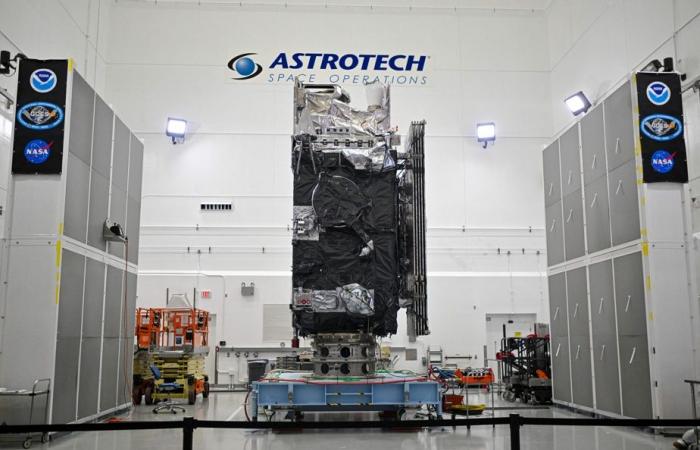(Cape Canaveral) A new American satellite intended to significantly improve predictions of solar storms, events capable of disrupting electrical and communications networks on Earth, is due to take off from Florida on Tuesday.
Posted at 10:09 a.m.
The satellite, which weighs nearly 3 tonnes and is the size of a small school bus, will also make it possible to observe hurricanes and fires on Earth until the 2030s.
The takeoff of a rocket Falcon Heavy of SpaceX transporting the precious cargo must take place from Cape Canaveral from 5:16 p.m. The firing window extends over two hours, but the weather conditions do not look favorable.
This will be the tenth takeoff of the powerful Falcon Heavy.
Named GOES-U, the machine is the last in a series of four satellites resulting from a collaboration between NASA and the American Oceanic and Atmospheric Observing Agency (NOAA).
They “are an essential tool to protect the United States and the billion people who live and work on the American continent,” said Pam Sullivan of NOAA at a press conference.
PHOTO MIGUEL J. RODRIGUEZ CARRILLO, AGENCE FRANCE-PRESSE ARCHIVES
The GOES-U
But GOES-U is the first of the four to include a coronagraph called CCOR-1. A coronagraph blocks the Sun’s disk, allowing the solar corona to be observed.
It is from this outer layer that “large solar explosions, called coronal mass ejections, originate, which can project billions of tons of material at millions of km/h towards the Earth,” explained Elsayed Talaat, in charge of space weather observations at NOAA.
This material can then disrupt satellites, energy infrastructure, aviation navigation systems or GPS.
In early May, a level 5 geomagnetic storm, the maximum level, hit Earth for the first time in two decades, causing impressive northern lights around the world.
With the new coronagraph, this event could have been better specified from the start (speed, direction, etc.), according to Elsayed Talaat.
This is the first time the United States will be able to observe the solar corona almost continuously, creating the equivalent of an eclipse every 30 minutes.
At the moment, such observations are received with a delay of up to 8 hours, carried out by a satellite launched in 1995, but which is expected to cease operating within two years.
The new instrument will be a “game changer” and “open a new chapter in space weather observations,” according to Elsayed Talaat.
Goes-U will be positioned in geostationary orbit, approximately 35,000 km above Earth, and will be operational after a few months of testing.







